The Sultan Qaboos Grand Mosque is the largest mosque in Oman and a significant landmark in Muscat. Its architecture features detailed carvings, detailed calligraphy, and a vast central chandelier. The mosque’s prayer hall houses a hand-woven carpet that took years to complete, reflecting the craftsmanship behind its design. The exterior is equally striking, with minarets and a landscaped courtyard. Open to visitors of all faiths, it provides insight into Islamic culture and Omani traditions. The peaceful atmosphere and detailed interiors make it a remarkable place to explore the city.
Location Of Sultan Qaboos Grand Mosque
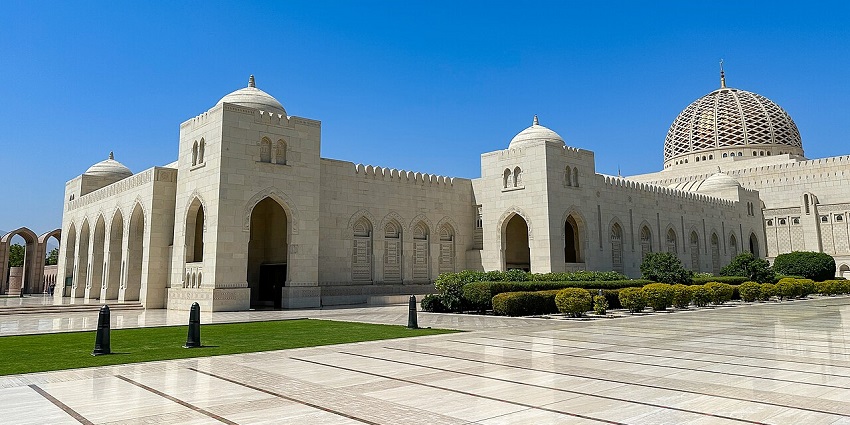
Photo: dronepicr / Wikimedia Commons
The Sultan Qaboos Grand Mosque is located in Muscat, Oman, in the Al Ghubrah district along Sultan Qaboos Street. It is one of the most well-known landmarks in the city, easily accessible from various parts of Muscat. Sultan Qaboos Grand Mosque opening times are from 8:00 AM to 11:00 AM for non-Muslim visitors, except on Fridays. As a major cultural and religious site, it attracts tourists worldwide, offering a glimpse into Omani architecture and Islamic traditions.
History Of Sultan Qaboos Grand Mosque

Photo: dronepicr / Wikimedia Commons
The Sultan Qaboos Grand Mosque was commissioned by Sultan Qaboos bin Said in 1992 to reflect Oman’s Islamic heritage and modern identity. Construction began in 1994 and was completed in 2001. The mosque was built using 300,000 tons of Indian sandstone and features an impressive blend of Islamic, Omani, and Persian architectural styles. One of its highlights is the Persian carpet in the main prayer hall, the world’s largest hand-woven carpet at the time.
How To Reach Sultan Qaboos Grand Mosque

Photo: Mostafameraji / Wikimedia Commons
If you are wondering how to reach Sultan Qaboos Grand Mosque, it is very convenient to do so, thanks to its well-connected transport options. The city is accessible by road, rail, air, and even sea.
By Air: The nearest airport is Muscat International Airport, about 15 km away. From there, you can hire a taxi or take a public bus to reach the mosque within 20 minutes.
By Train: Oman currently does not have a railway system, so train travel is not an option.
By Road: Muscat has a well-maintained road network. You can take a local taxi or rent a car to reach the mosque. Public buses also operate along Sultan Qaboos Street.
By Sea: Muscat’s Port Sultan Qaboos receives cruise ships, and visitors arriving by sea can take a taxi from the port to the mosque in about 15–20 minutes.
Places To Visit In And Around Sultan Qaboos Grand Mosque
Here is a list of the noteworthy places to visit around the Sultan Qaboos Grand Mosque:
1. Royal Opera House Muscat
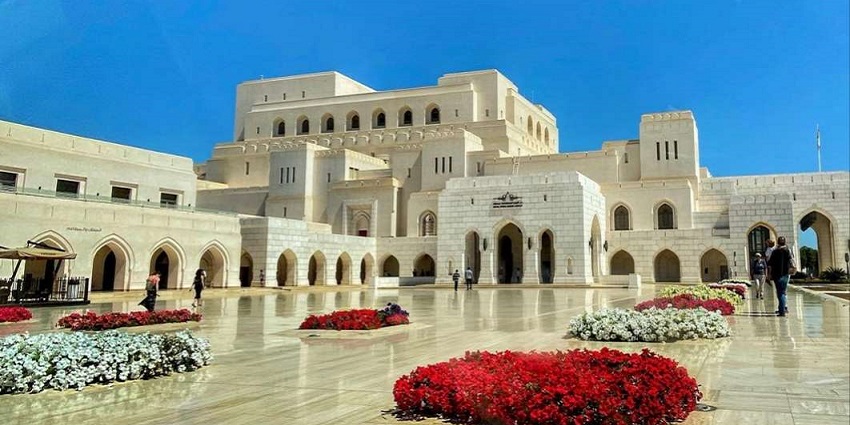
Photo: Arsalaan Ahmad / Wikimedia Commons
The Royal Opera House Muscat is a major venue for musical performances and cultural events in Oman. Designed with a mix of Islamic and modern architectural styles, it is a symbol of Omani heritage and appreciation for the arts. The opera house hosts various events, including international operas, orchestral concerts, and traditional music performances. Visitors can take guided tours to learn about its history, design, and role in promoting the arts.
Ideal Trip Duration: 2 – 3 hours
2. Mutrah Souq
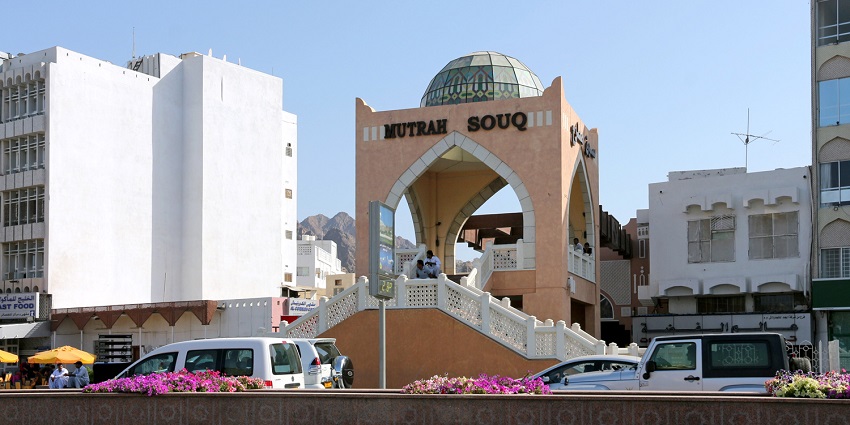
Photo: Banja-Frans Mulder / Wikimedia Commons
Mutrah Souq is one of Oman’s oldest and most well-known markets, offering a lively shopping experience filled with traditional goods. Walking through its narrow alleys, visitors will find stalls selling perfumes, spices, textiles, jewellery, and handcrafted souvenirs. The air is often filled with the scent of frankincense, a product deeply tied to Omani culture. Local traders enthusiastically showcase their goods, allowing visitors to experience a traditional shopping style. In addition to shopping, visitors can enjoy local snacks or sip Omani coffee at nearby cafés.
Ideal Trip Duration: 1 – 2 hours
3. Al Alam Palace
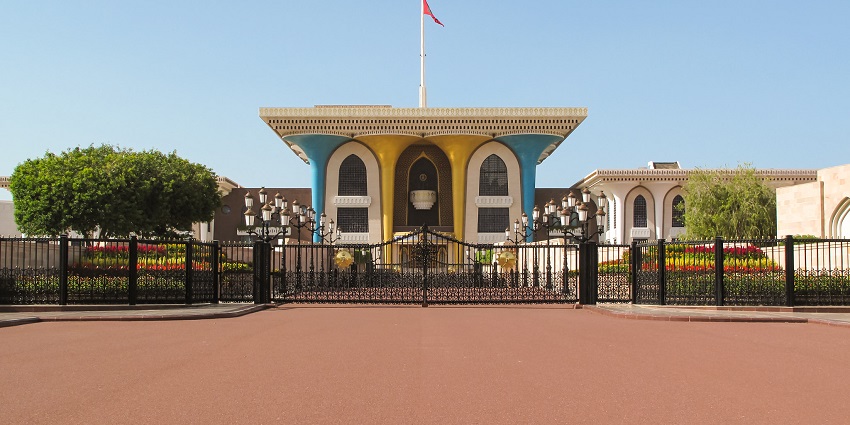
Photo: Francisco Anzola / Wikimedia Commons
Al Alam Palace serves as a ceremonial residence for the Sultan of Oman and is one of the most recognised landmarks in Muscat. The palace’s blue and gold columns make it stand out, and while entry is not allowed, visitors can admire its impressive exterior. The palace is set within an area of historical importance, with Al Jalali and Al Mirani forts standing nearby, offering insight into Oman’s past. It is a popular place near Sultan Qaboos Grand Mosque for photography and sightseeing.
Ideal Trip Duration: 1 hour
4. Qurum Beach

Photo: Eduard Marmet / Wikimedia Commons
Qurum Beach is a well-known coastal spot in Muscat, attracting visitors who enjoy outdoor activities and relaxing by the sea. The long stretch of sand is ideal for walking, jogging, or simply sitting and watching the waves. Families often gather here for picnics, while others enjoy beachside dining at cafés and restaurants that serve local and international dishes. The calm waters make it a good place for swimming, and the nearby Qurum Natural Park provides additional green spaces for those who prefer a quieter setting. The beach is especially popular in the evenings, as the weather makes it more enjoyable.
Ideal Trip Duration: 2 – 3 hours
5. Bait Al Zubair Museum
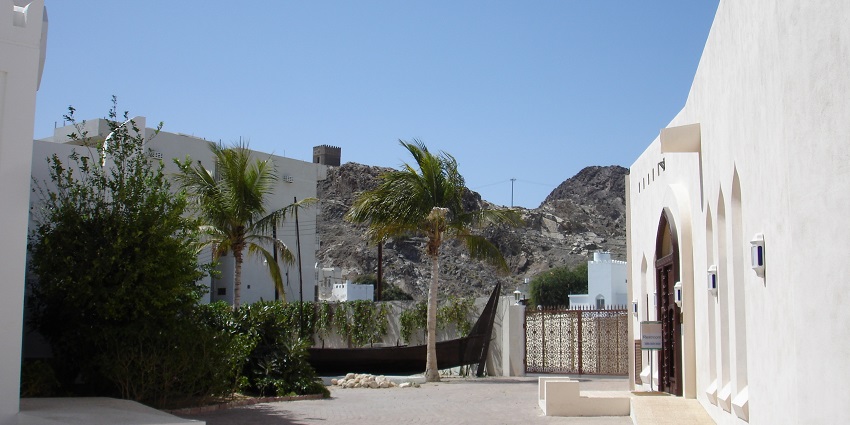
Photo: Step / Wikimedia Commons
Bait Al Zubair Museum is a well-curated space that offers a detailed look into Oman’s cultural and historical past. The museum showcases traditional Omani clothing, weapons, household items, and jewellery, giving visitors a deeper understanding of the country’s heritage. One of the highlights is a recreated Omani village, where visitors can see how people lived in earlier times. The museum is privately owned but is open to the public, making it a good place for those interested in history. With detailed exhibits and well-preserved artefacts, it serves as an educational visit for all ages.
Ideal Trip Duration: 1 – 2 hours
Where To Stay

Photo: ManuelaJaeger / Pixabay / Image For Representation Only
Sultan Qaboos Grand Mosque is surrounded by several accommodation options for different budgets. The Chedi Muscat and Al Bustan Palace offer high-end comfort and top-class amenities for a luxury stay. Mid-range hotels like City Seasons Hotel and Centara Muscat provide a balance of affordability and quality service. Budget-friendly choices include Mutrah Hotel and Naseem Hotel, which offer simple yet convenient stays.
Where To Eat
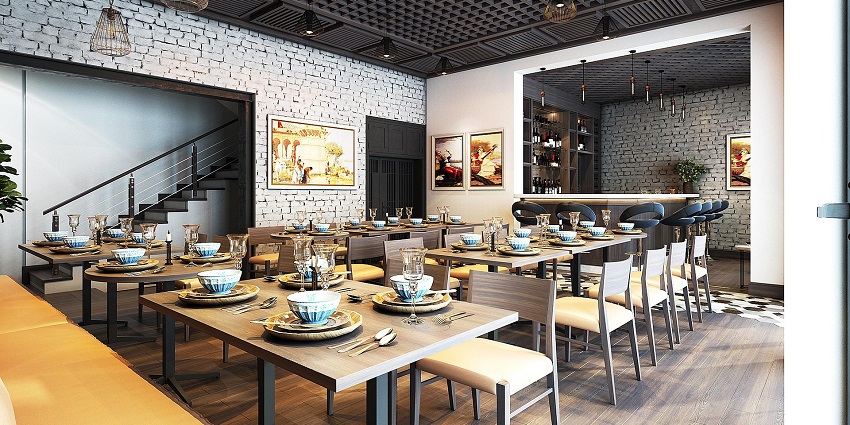
Photo: tuanarch87 / Pixabay / Image For Representation Only
There are many dining options near Sultan Qaboos Grand Mosque, ranging from traditional Omani restaurants to international cuisine. Bin Ateeq and Bait Al Luban serve authentic Omani dishes, perfect for those trying local flavours. The Beach Restaurant is known for its fresh seafood, while Shiraz offers Persian cuisine. For more affordable meals, local cafés and street food vendors serve shawarmas, grilled meats, and traditional snacks at reasonable prices. Whether you prefer fine dining or a quick meal, there are plenty of choices near the mosque.
Best Time To Visit

Photo: dronepicr / Wikimedia Commons
The best time to visit Sultan Qaboos Grand Mosque is between October and April when the weather is cooler and more comfortable for exploring. The Sultan Qaboos Grand Mosque timings vary for visitors. Sultan Qaboos Grand Mosque opening times are from 8:00 AM to 11:00 AM for non-Muslim visitors, except on Fridays. The mosque remains closed to non-Muslim visitors on Fridays. The Muslims can enter throughout the day for prayers. Timings may change during Islamic holidays or special events, so checking before visiting is advisable to ensure a smooth experience.
Other Factors To Consider
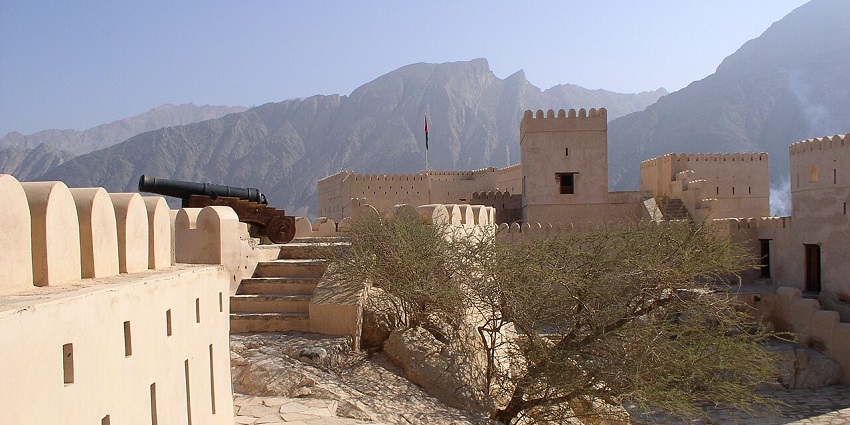
Photo: Sakralamn / Wikimedia Commons
Average Cost Of The Trip
A Sultan Qaboos Grand Mosque tour offers a detailed experience of one of Oman’s most remarkable landmarks. The average trip cost to Sultan Qaboos Grand Mosque depends on your travel style and accommodation. Many tour packages include transport, a guided visit, and stops at nearby attractions. Prices for guided tours typically range from ₹1,500–₹5,000, depending on the package and inclusions.
Tips For Travellers
- Dress modestly when visiting religious sites like Sultan Qaboos Grand Mosque.
- Visit early in the morning to avoid crowds and enjoy a peaceful experience.
- Women must wear a headscarf when entering the mosque.
- Guided tours are available for deeper insights into cultural and historical sites.
Check for photography.
The Sultan Qaboos Grand Mosque is a peaceful and impressive landmark in Muscat. It is a place where visitors can admire Islamic art, learn about Omani traditions, and enjoy the grand design of the building. Its detailed decorations and large open spaces make it a memorable experience. Book your trip with TripXL and understand the beauty of Islamic architecture and Omani culture.
Cover Photo: StellarD / Wikimedia Commons


 WhatsApp
WhatsApp
 Twitter
Twitter









